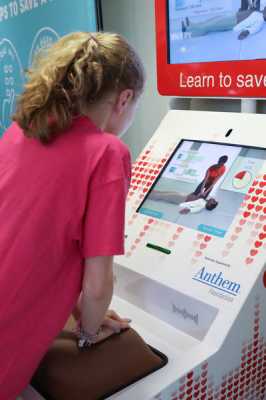Author Interviews, Brain Injury, Imperial College, Pediatrics / 30.11.2017
Most Common Brain Injuries in Babies Due to Hypoxia and Bleeding
MedicalResearch.com Interview with:
 Dr Chris Gale
Clinical Senior Lecturer in Neonatal Medicine
Imperial College London and
Consultant Neonatologist at Chelsea and Westminster Hospital
NHS Foundation Trust
MedicalResearch.com: What is the background for this study? What are the main findings?
Response: As part of a drive to make England a safer place to give birth, the Department of Health in England has set a target of reducing the number of babies that incur brain injury during or soon after birth by 20% by 2020 and to halve them by 2030.
Before now United Kingdom health services did not have a standard definition of brain injury in babies and there has been no systematic collection of data for this purpose. With colleagues and in collaboration with the Department of Health, we have devised a practical way to measure the incidence rate of brain injury in babies using routinely recorded data held in the National Neonatal Research Database.
The research estimated that 3,418 babies suffered conditions linked to brain injury at or soon after birth in 2015, which equates to an incidence rate of 5.14 per 1,000 live births. For preterm births (babies born at or less than 37 weeks) the rate was 25.88 per 1,000 live births in 2015, almost six times greater than the rate for full-term births, which was 3.47 per 1,000 live births.
Overall, the research found that the most common type of condition that contributed brain injuries was damage caused by lack of oxygen to the brain, called hypoxic ischaemic encephalopathy; this is seen mainly in term babies. For preterm babies, the largest contributor to brain injuries is from bleeding into and around the ventricles of the brain, a condition called periventricular haemorrhage.
It is also the first time that brain injuries in babies have been measured using data gathered routinely during day to day clinical care on NHS neonatal units. The use of routine data required no additional work for clinical staff and provides a valuable way to measure the effectiveness of interventions to reduce brain injury.
(more…)
Dr Chris Gale
Clinical Senior Lecturer in Neonatal Medicine
Imperial College London and
Consultant Neonatologist at Chelsea and Westminster Hospital
NHS Foundation Trust
MedicalResearch.com: What is the background for this study? What are the main findings?
Response: As part of a drive to make England a safer place to give birth, the Department of Health in England has set a target of reducing the number of babies that incur brain injury during or soon after birth by 20% by 2020 and to halve them by 2030.
Before now United Kingdom health services did not have a standard definition of brain injury in babies and there has been no systematic collection of data for this purpose. With colleagues and in collaboration with the Department of Health, we have devised a practical way to measure the incidence rate of brain injury in babies using routinely recorded data held in the National Neonatal Research Database.
The research estimated that 3,418 babies suffered conditions linked to brain injury at or soon after birth in 2015, which equates to an incidence rate of 5.14 per 1,000 live births. For preterm births (babies born at or less than 37 weeks) the rate was 25.88 per 1,000 live births in 2015, almost six times greater than the rate for full-term births, which was 3.47 per 1,000 live births.
Overall, the research found that the most common type of condition that contributed brain injuries was damage caused by lack of oxygen to the brain, called hypoxic ischaemic encephalopathy; this is seen mainly in term babies. For preterm babies, the largest contributor to brain injuries is from bleeding into and around the ventricles of the brain, a condition called periventricular haemorrhage.
It is also the first time that brain injuries in babies have been measured using data gathered routinely during day to day clinical care on NHS neonatal units. The use of routine data required no additional work for clinical staff and provides a valuable way to measure the effectiveness of interventions to reduce brain injury.
(more…)
 Dr Chris Gale
Clinical Senior Lecturer in Neonatal Medicine
Imperial College London and
Consultant Neonatologist at Chelsea and Westminster Hospital
NHS Foundation Trust
MedicalResearch.com: What is the background for this study? What are the main findings?
Response: As part of a drive to make England a safer place to give birth, the Department of Health in England has set a target of reducing the number of babies that incur brain injury during or soon after birth by 20% by 2020 and to halve them by 2030.
Before now United Kingdom health services did not have a standard definition of brain injury in babies and there has been no systematic collection of data for this purpose. With colleagues and in collaboration with the Department of Health, we have devised a practical way to measure the incidence rate of brain injury in babies using routinely recorded data held in the National Neonatal Research Database.
The research estimated that 3,418 babies suffered conditions linked to brain injury at or soon after birth in 2015, which equates to an incidence rate of 5.14 per 1,000 live births. For preterm births (babies born at or less than 37 weeks) the rate was 25.88 per 1,000 live births in 2015, almost six times greater than the rate for full-term births, which was 3.47 per 1,000 live births.
Overall, the research found that the most common type of condition that contributed brain injuries was damage caused by lack of oxygen to the brain, called hypoxic ischaemic encephalopathy; this is seen mainly in term babies. For preterm babies, the largest contributor to brain injuries is from bleeding into and around the ventricles of the brain, a condition called periventricular haemorrhage.
It is also the first time that brain injuries in babies have been measured using data gathered routinely during day to day clinical care on NHS neonatal units. The use of routine data required no additional work for clinical staff and provides a valuable way to measure the effectiveness of interventions to reduce brain injury.
(more…)
Dr Chris Gale
Clinical Senior Lecturer in Neonatal Medicine
Imperial College London and
Consultant Neonatologist at Chelsea and Westminster Hospital
NHS Foundation Trust
MedicalResearch.com: What is the background for this study? What are the main findings?
Response: As part of a drive to make England a safer place to give birth, the Department of Health in England has set a target of reducing the number of babies that incur brain injury during or soon after birth by 20% by 2020 and to halve them by 2030.
Before now United Kingdom health services did not have a standard definition of brain injury in babies and there has been no systematic collection of data for this purpose. With colleagues and in collaboration with the Department of Health, we have devised a practical way to measure the incidence rate of brain injury in babies using routinely recorded data held in the National Neonatal Research Database.
The research estimated that 3,418 babies suffered conditions linked to brain injury at or soon after birth in 2015, which equates to an incidence rate of 5.14 per 1,000 live births. For preterm births (babies born at or less than 37 weeks) the rate was 25.88 per 1,000 live births in 2015, almost six times greater than the rate for full-term births, which was 3.47 per 1,000 live births.
Overall, the research found that the most common type of condition that contributed brain injuries was damage caused by lack of oxygen to the brain, called hypoxic ischaemic encephalopathy; this is seen mainly in term babies. For preterm babies, the largest contributor to brain injuries is from bleeding into and around the ventricles of the brain, a condition called periventricular haemorrhage.
It is also the first time that brain injuries in babies have been measured using data gathered routinely during day to day clinical care on NHS neonatal units. The use of routine data required no additional work for clinical staff and provides a valuable way to measure the effectiveness of interventions to reduce brain injury.
(more…)







